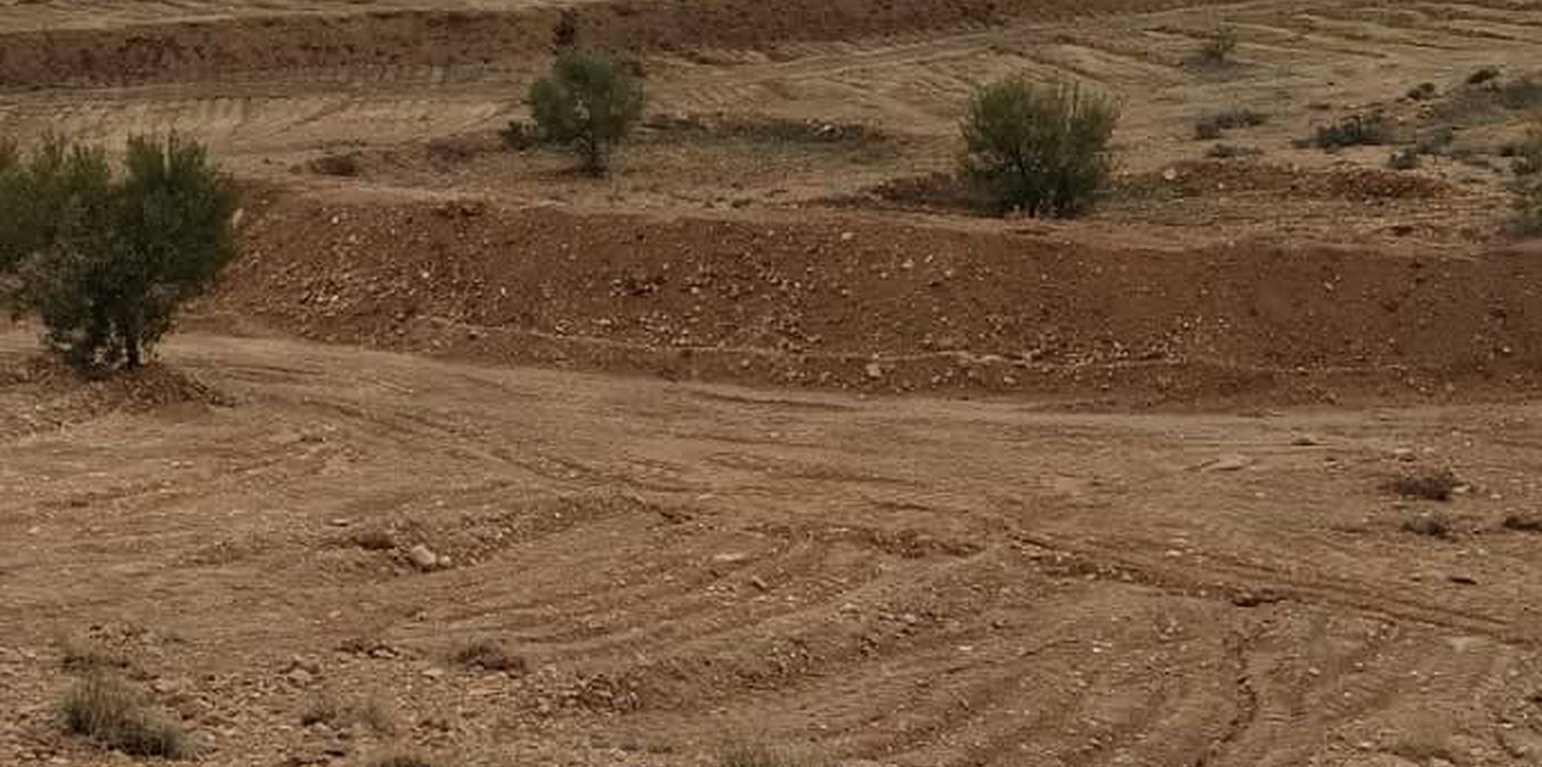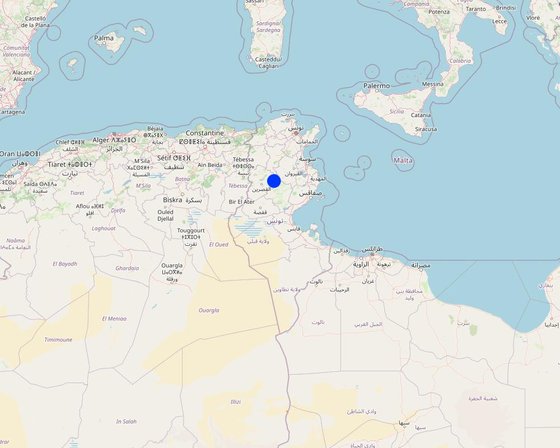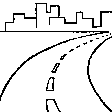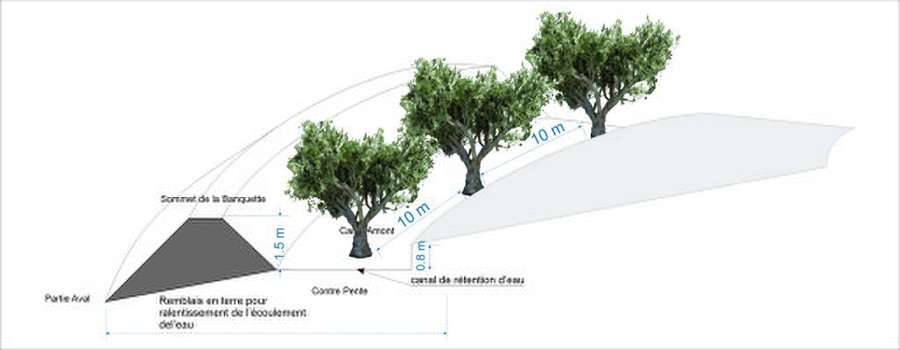



Anti-erosion banks are widespread in central Tunisia. In semi-arid environments, these structures consist of earthen levees built perpendicular to the slope of the land accompanied by a channel designed to retain runoff water and sediment between the banks.
Implementing and maintaining these structures can be financially burdensome for farmers, necessitating biological consolidation to ensure their long-term viability. Consolidation can be achieved using various types of tree, pasture and fodder plantations. Successful biological consolidation is contingent on factors such as soil type (nature, relief), climate (particularly annual rainfall), irrigation water resources and the species chosen. Most farmers use olive trees to consolidate soil and water conservation structures in their plots.
Consolidation efforts encompass both recent and aging structures, focusing on rehabilitation and ongoing maintenance. Planting occurs on the embankments and within their channels, providing essential plant cover and root systems that bind soil particles, reducing the risk of erosion. This technique has proven to enhance soil fertility, boost crop yields, and generate income for farmers through the sale of olives and olive oil. Despite the 10-15% loss of land surface associated with embankment installation, the consolidation process increases the overall value of the land. The presence of olive trees enhances the land's worth.

Location: Sidi Bouzid, Tunisia
No. of Technology sites analysed: single site
Spread of the Technology: evenly spread over an area (approx. 1,000-10,000 km2)
In a permanently protected area?: No
Date of implementation: 1998
Type of introduction


| Species | Count |
| sheep | 50 |







The land was unproductive before the embankments were created.
Embankments optimize growth conditions, reducing the risk of production failure.
Quantity before SLM: 0%
Quantity after SLM: 100%
Embankments serve as barriers, slowing down water flow and reducing the risk of soil erosion through runoff. On the other hand, the olive tree's extensive root system can penetrate deep into the soil, preventing soil erosion and improving long-term stability.
Olive trees, like other perennial woody plants, have the capacity to sequester carbon dioxide from the atmosphere. This can help mitigate climate change by reducing greenhouse gas emissions.